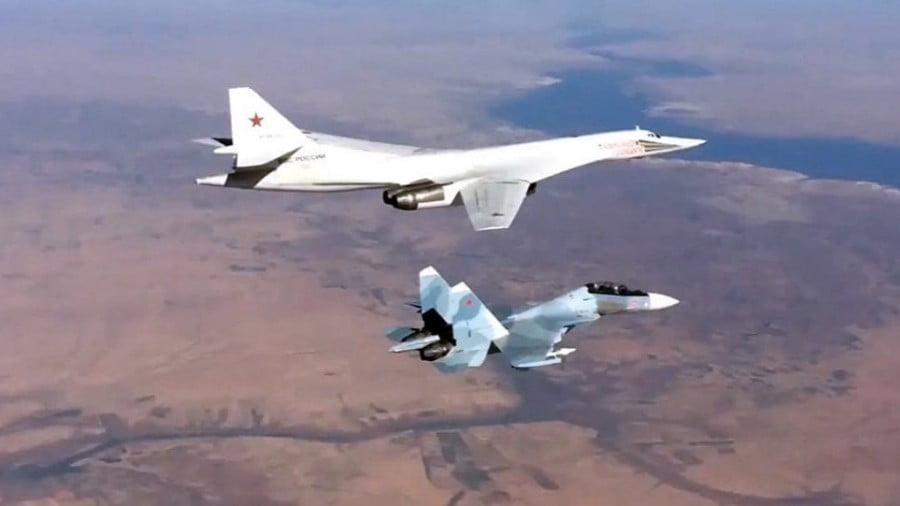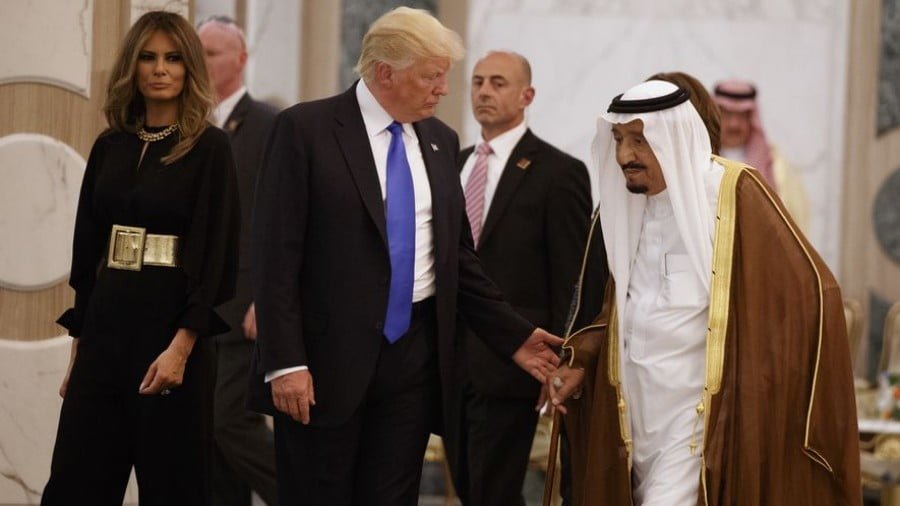Russia’s Military Operation in Syria: Three Years On
Russia’s military operation in Syria was launched on September 30, 2015. Over 63, 000 servicemen, including 26,000 commissioned officers and 434 generals, have seen combat there to receive invaluable experience. Russian forces have used 231 new types of advanced weapons, including aircraft, surface-to-air systems, and cruise missiles. It’s interesting to note that the representatives of arms-producing companies are in place to assess the systems’ performance. The Syrian experience is to be taken into account as new weapons are developed.
All in all, the Russian Aerospace Forces have conducted 39,000 sorties or over 100 flights daily on average, destroying 121,466 targets and killing more than 86,000 militants, Russian Defense Minister Sergey Shoigu reported. The service has launched 66 long-range cruise missile strikes. The operations have been supported by A-50 and Tu-214R early warning and control aircraft as well as Il-20M1 electronic warfare (EW) planes. It should be noted that the Aerospace Forces group has not been large, with estimated 30-50 combat aircraft and 16-40 helicopters deployed at any given moment.
The Su-35S is a brand-new air superiority fighter, which has proven to be a formidable weapon. Dave Majumbar, a leading military expert and defense editor of The National Interest, believes that “It is only a matter of time before the Russians manage to sell more of these jets around the world—especially to those nations that either do not want to or are unable to buy Western aircraft”. The Su-34M frontline bomber is the workhorse to bear the brunt of the work. And it is doing it with flying colors. The plane is equipped with the SVP-24 Tefest special computing subsystem to provide for enhanced accuracy. The GLONASS satellite navigation system is used to constantly compare the position of the aircraft and the target and measure the environmental parameters. The information from datalinks allows computing an “envelope” (speed, altitude, and course) inside which a gravity bomb is automatically released at the precise moment to strike with the same accuracy as cutting edge smart munitions do. Even if GLONASS were jammed, the sensors would do the job. Fire-and-forget guidance allows the pilot to concentrate on detecting threats and targets. The weather conditions or time of the day play no role. Su-35s and Su-30SMs also have contributed to air-to-surface operations though their prime mission is air cover. The MiG-29 SMT came to Syria in September 2017 for testing.
Tu-160 and Tu-95MS strategic bombers as well as Tu-22M3 long range bomber, accompanied by Su-30SMs, Su-35s and Su-27SM3s, saw combat for the first time. The strategic bombers used the brand new Kh-101 and Kh-55 cruise missiles with conventional warheads contained inside the body of the planes.
The successful performance in Syria prompted the decision to renew the production of Tu-160 bombers upgraded to the M2 version. On Nov. 17, 2015 two Tu-160s launched 16 Kh-101 missiles to knock out the targets with the aircraft returning to the Engels air base in Russia.
The operation in Syria is the first time Russia demonstrated its ability to launch massive long-range high-precision strikes, including the satellite-guided Su-24M and Su-34 have used Kh-29L laser-guided air-to-surface missiles as well as Kh-25ML lightweight missile with a modular range of guidance systems and a range of 10 km. Russian media have reported that Su-34s use the upgraded Kh-35U turbojet subsonic cruise anti-ship missile with a range of 300 km (160 mi). Two Su-57 fifth generation jets have gone through a two-day testing period in Syria. Il-76 and An-124 have conducted 2,785 flights to provide the forces with the logistical support they need.
The Mi-28N and the Ka-52 attack helicopters of Army aviation saw their first ever battle tests, liberating the cities of Palmyra and Aleppo. Both use Ataka anti-tank missile systems. Mi-24Ps support the forces on the ground.
During the three-year period 86 surface ships, 14 submarines and 83 auxiliary vessels have taken part in the operation. Admiral Kuznetsov, the only Russian aircraft carrier, was in the area in the period Nov.2016-Jan. 2017. Su-33s and conducted 420 sorties, including 117 at night time, to hit 1252 targets. Ka-52K and Ka-31SV (Ka-35) naval aviation reconnaissance and combat helicopters have made their first flights in combat conditions. Bastion and Oniks coastal anti-ship missile systems protect the naval group near the Syria’s shore. Naval Kalibr cruise missiles, installed on surface ships as well as submarines, are able to precisely strike land targets at a distance of 2,600km. They have been used 13 times to deliver 100 strikes. The ability to fire long-range sea and air-launched cruise missiles has ushered Russia into the club of the chosen. It no longer has to rely exclusively on nuclear weapons.
Buk-M2s and Pantsir-S1 were the first systems deployed in Syria. The latter has proven to be the most effective weapon against drones. It is defending the Hmeimim base from UAV attacks daily with no drone having penetrated the Pantsir-protected space. The S-400 has been deployed in Hmeimim to protect the skies over a large part of Syria since November 2015 to be later joined by S300V4. air defense missile systems are protecting the Tartus naval base where Russian Navy ships are anchored. The Krasukha-4 mobile electronic warfare system was delivered to Hmeimim on Sept.25 to boost the air defenses. The system can jam communications systems, disable guided missiles and aircraft, and neutralize Low-Earth Orbit spy satellites and radars (AWACS) at the ranges of 150-300km.
Hmeimim is well guarded by Army, SOF and Marines supported by T-90A and T-72B2 MBTs and Msta-B 152mm towed howitzers. The Uran-6 mine clearing robot was used to demine Palmira and Aleppo. Its operations were supported by Scarabey and Sfera reconnaissance robotic systems. The Uran-9 tracked Unmanned Ground Vehicle, or a remote-controlled tank, has coped with the most difficult missions in combat conditions.
The new Tigr 4×4, multipurpose, all-terrain infantry mobility vehicle, is widely used for a broad range of missions across the country, including the support of military police missions. The Typhoon-U mine-resistant assault vehicle used by paratroopers is also in Syria having gone through tests there before entering service.
Unmanned aerial vehicles (UAVs) have conducted over 25, 000 sorties to detect 47,500 targets. Roughly 70 drones were carrying out missions daily. The overall flight time of Forpost, Orlan-10, Aileron and Zala drones is equal to 140, 000 hours. The situation is monitored round the clock.
In 2017, the Terminator tank support fighting vehicle saw combat as a unique system destined for urban warfare. The first batch of the systems that have no analogues in the world entered service with the Russian Army in March.
The Kornet anti-tank system with air defense capability has proven to be a reliable and very deadly weapon. The system’s portable-transportable launcher can be installed on wheeled and tracked vehicles. The Solntsepyok heavy flamethrower has become indispensable for striking enemy in mountainous areas and underground tunnels and bunkers.
Russian military advisors also trained and advised soldiers of the Syrian Arab Army (SAA), while developing relationships with pro-government militias. Russia managed and funded the Fifth Corps in 2016. The force, which consists of volunteers, is deployed alongside other SAA units. Russian high-ranking officers and generals on train, advice and assist missions have often led Syrian troops to victories sharing their experience and expertise.
In 2015, Russia was predicted to plunge in a protracted conflict with no end in sight, which would be sapping its resources without any positive results achieved. Western experts believed Russia was to sustain a long-term deployment far from its borders. It has turned out differently.
Since the start of Russia’s operation, the Syria’s government has gone from the brink of collapse to near victory, with its control established control over the larger part of the country. It is firmly in power. Aleppo has been cleared of terrorists and control of Palmyra regained. This century, Russia’s victory in Syria is the only example of successful military operation achieved in a short period of time with positive results, paving the way for a negotiated solution, with the focus shifting to a political process. The time has come for diplomats, not guns, to talk.
Russia has become the key actor in Syria and its post-conflict reconstruction. On Sept. 17, Moscow and Ankara agreed to a diplomatic solution for Syria’s northern Idlib province. The Russia-initiated Astana peace process has made progress, such as the establishment of de-escalation zones among other things, unlike the UN-brokered talks. Post-war reconstruction has started in many areas.
Three years on, it is safe to say the success in Syria has reaffirmed Russia’s status as a global superpower with power projection capability. Moscow has become the key stakeholder in the Middle East. Its global political clout has grown immensely as the world is shifting from a unipolar pattern to multipolar configuration.







